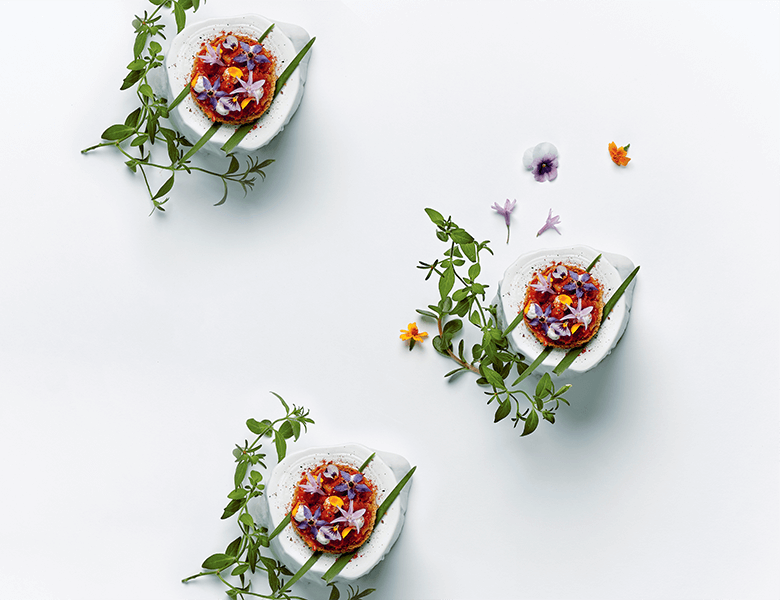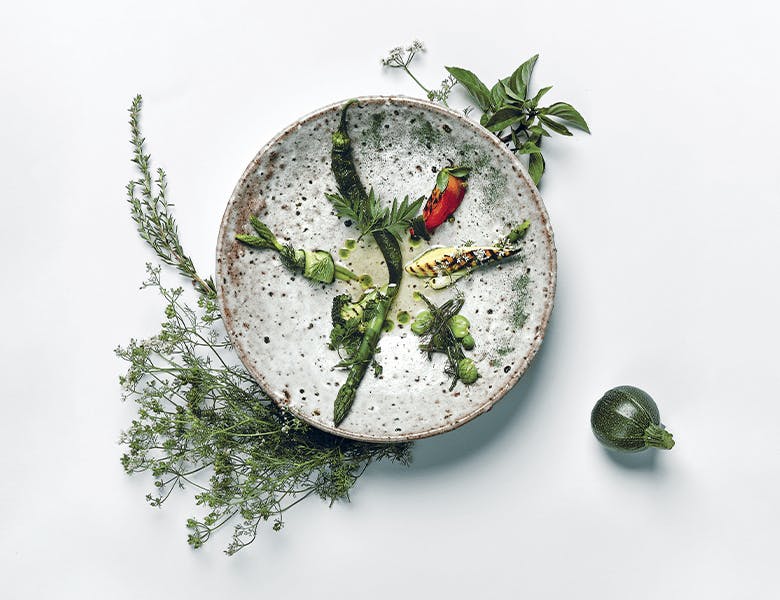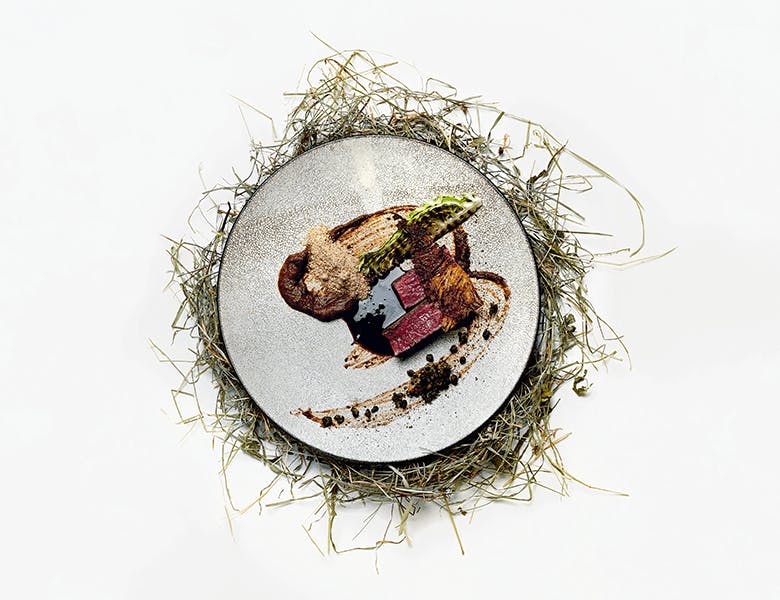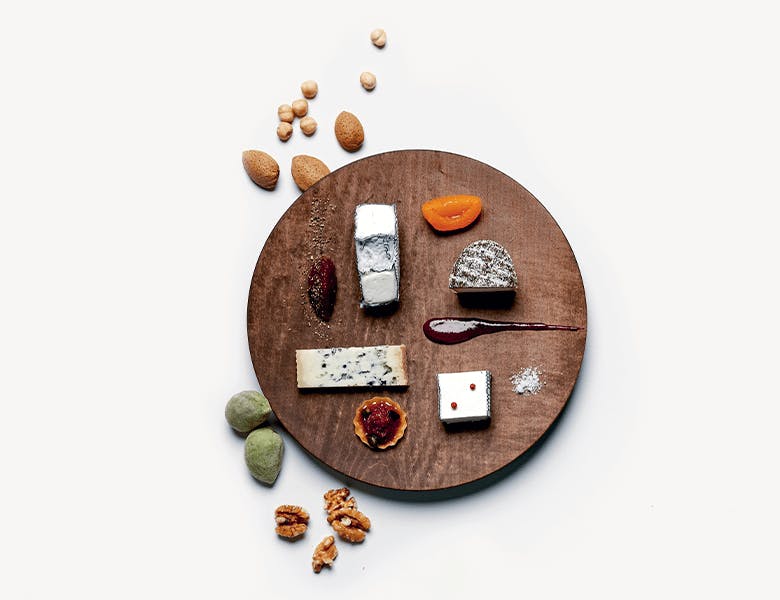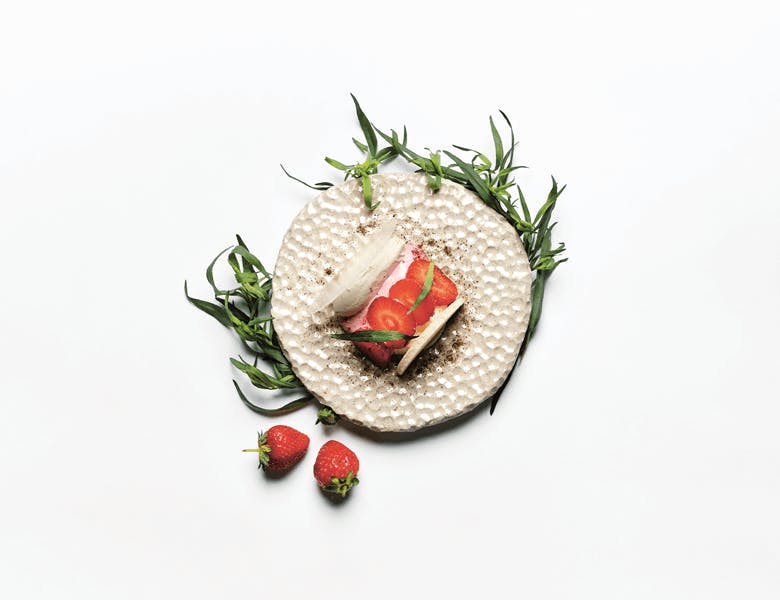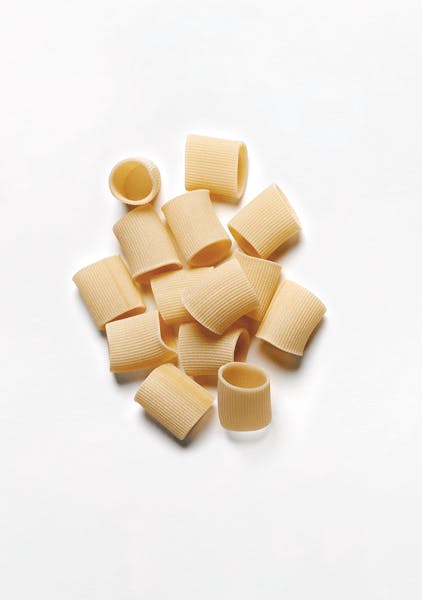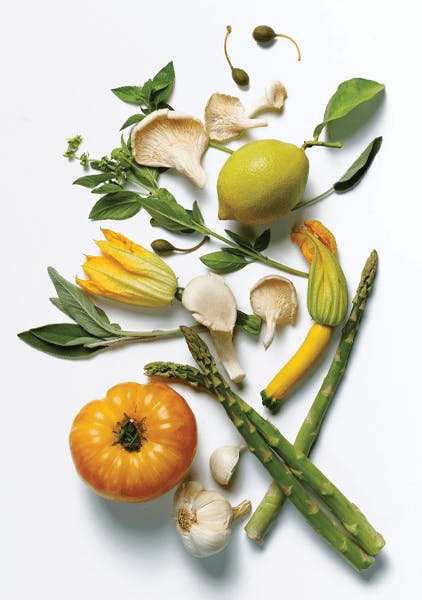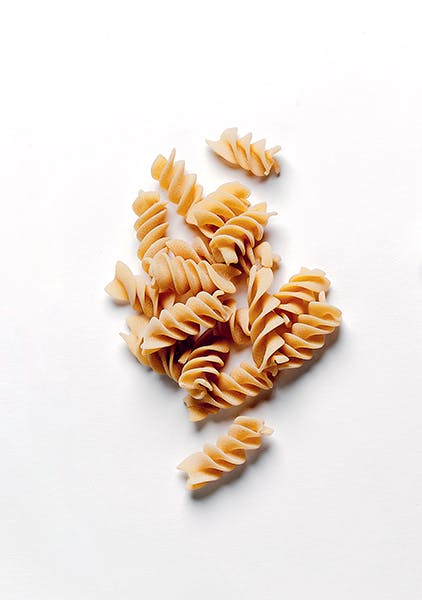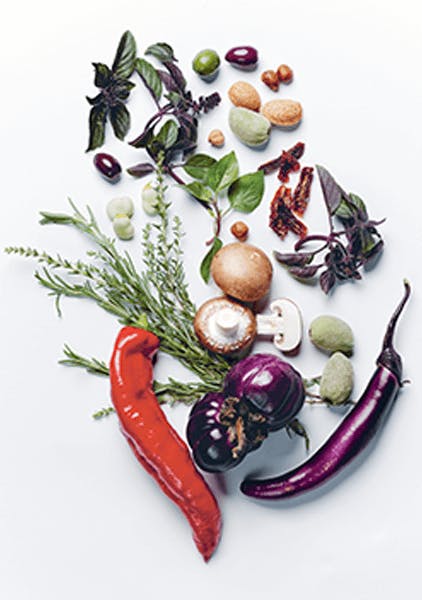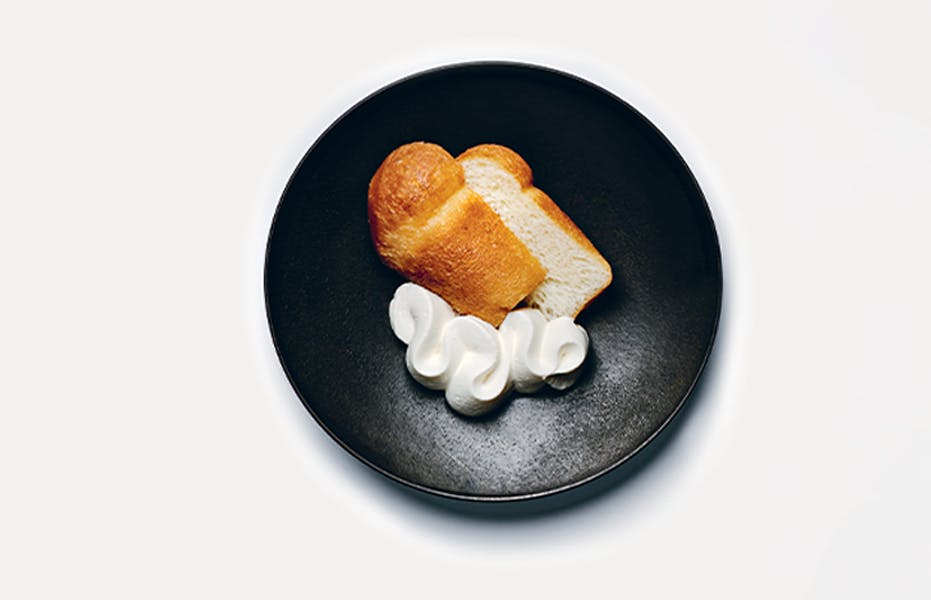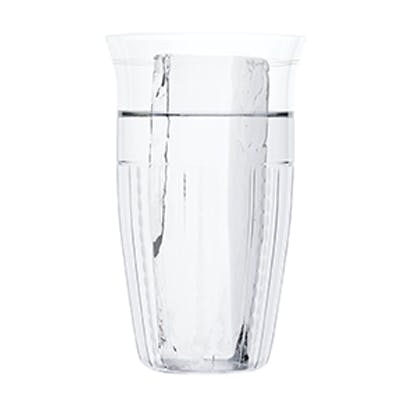
New Vibration
Pairings
THE TASTE OF EXPERIENCE
While whisky and rum inarguably have their place in the realm of gastronomy, food pairings remain almost exclusively the province of wine and champagne. In France, pairing spirits with food is indeed considered more of an experience or a fun experiment, rather than a tradition. But a glance at other points on the map – Japan, for example – can reveal different mores entirely… Inspired by many discoveries and encounters, this chapter invites sakes, wines, and spirits to the table – a scheme undertaken in partnership with the Golden Promise Whisky Bar and La Maison du Whisky’s partners. Asked to share their flights of fancy, La Maison du Sake and its Michelin star restaurant ERH (Eau Riz Homme), Velier, and Parisian restaurant Helen — famed for its cuisine and its one-of-a-kind dessert trolley — have dreamt up new pairings and new ways of enjoying their favourite beverages. On the menu of this gourmet voyage: the infinite versatility of sake; Triple A wine married to Italian cuisine; rum for dessert; shochu, Japan’s ancestral spirit, in its finest accoutrements; and to cap it all off: the art of enjoying American whiskey, as reimagined by Golden Promise.
SAKE AND GASTRONOMY
Still relatively unknown in France a scant few years ago, sake has slowly been establishing itself as a quality alternative to wine, and finding its place in the world of French gastronomy. Specialist retailer La Maison du Sake, founded in 2015 by Youlin Ly, is an active contributor to the growing recognition of this emblematic Japanese drink among chefs, sommeliers, and the public at large. Whether modern or traditional in style, plain or sparkling, sake can be paired with any course of a meal.
Devoid of tannins and blessed with an unexpectedlywide aromatic spectrum, it can be enjoyed with any type of cuisine, from appetiser to dessert, and is particularly well-suited to some of the more difficult-to-pair vegetables – artichoke, asparagus, cucumber, and avocado. Lastly, sake goes surprisingly well with products of the French terroir, such as cheese.
For these pages, La Maison du Sake has selected six brews from among the very best sake producers, pairing them with a menu created by Michelin-star restaurant ERH chef Ryuichi Utsumi. Two liqueurs serve to close out this gourmet voyage inspired by France and Japan.
SPARKLING SAKE — Produced following either a Champagne-style method or the ancestral Japanese way, sparkling sake is a perfect introduction for novices. Naturally effervescent, it is also an easy pick for a festive appetiser.
Miyasaka
The Miyasaka family has been brewing its sake under the Masumi name since 1662, in the Nagano prefecture city of Suwa. Held in high esteem in Japan, the brewery has contributed in no small way to forging the very identity of sake – it is particularly renowned as the birthplace of yeast no.7, which was collected on the premises in 1946 and is today one of the most com mon ly- u se d in the country ’s s ake production. Masumi’s minimalist branding is the brainchild of Shinichiro Ogata, an industrial designer, interior architect, and restaurant owner with an all-consuming passion for tea.
MODERN-STYLE SAKE — Fresh, fruity, and floral, modern sakes are inarguably the most accessible entry-point into the category. They can be enjoyed as an apéritif or during a meal, at a temperature between 6° and 12°C – just like a white wine. Serving them in a wine glass allows the aromas to express themselves fully.
Hiraizumi
Founded in 1487 during the Muromachi period (1336-1573), Hiraizumi is the third-oldest sake brewery in Japan. For 27 generations, every single batch of sake has been produced according to the Yamahai method, a traditional technique for making the yeast-starter with water, rice, and koji – the first step in sake fermentation. The resulting brews are complex, with remarkable tartness.
Takeno
Takeno was created in Kyoto in 1947, born of the merger of four sake breweries. The familyrun company is known for its innovative brewing method. Yoshiki Yukimachi — who took over from his father — today oversees all sake brewing operations, and is one of the few producers of fine and complex aged sakes.
TRADITIONAL SAKE — Traditional sake’s profile can be either light and crystalline – allowing the water to express itself – or tertiary, emphasising the rice. ‘Water-type’ traditional sakes, with their fine and delicate profiles, are enjoyed at temperatures between 6° and 12°C and pair marvellously with subtle, light fare (carpaccio, ceviche…). As for ‘rice-type’ traditional sakes, they are rather served at cellar temperature (around 15°C, like red wine) or warm (up to 55°C) – especially in winter. They pair well with many kinds of dish, but are particularly suited to vegetables, mushrooms, stews, and so on. Traditional sake is best when served in traditional Japanese ceramic or porcelain cups.
Izumibashi
Founded in Kanagawa prefecture in 1857, the Izumibashi brewery developed its own system of sustainable agriculture as early as 1995. It is one of the rare sake producers to cultivate its own rice, thereby controlling the production process from end to end. Staying true to its artisanal production methods, the brewery continues to follow the Kimoto process, which like Yamahai is a natural process of making the yeast-starter with water, rice, and koji, but no added lactic acid.
NATURAL SAKE — An intense expression of the flavours of rice, natural sake is made exclusively from airborne yeasts and is naturally-fermented following the Kimoto or Yamahai methods. Its tertiary, yeasty aromas make it a surprisingly good pairing with cheese.
Kitajima
Founded in Shiga prefecture in 1805, this artisanal brewery is located slightly east of Kyoto, on the opposite shore of Lake Biwa. Its sakes are the result of natural fermentation by way of airborne yeasts, using local varieties of rice with very expressive, rustic flavours.
KITAJIMA Natural I 19%
LIQUEURS — For dessert, La Maison du Saké has selected two typical Japanese liqueurs from Miyasaka family brewery Masumi: Umeshu and Yuzushu, both products of the maceration of fruit in shochu distilled by the company from its own sake lees.
Parmi les vins nature labellisés Triple A (Agriculteur Artisan Artiste), ce chapitre met à l’honneur la gamme Frus, élaborée par le domaine viticole Marina Danieli, l’un des plus importants de l’appellation DOC du Colli Orientali del Friuli.
WINE FRUS
Founded in the late 1800s and passed down from one generation of women to the next, the Marina Danieli farm covers 100 hectares of land, comprising vineyards, arable lands, woodlands, vegetable plots, and orchards. Its wine-growing parcels are located in the rolling hills of Buttrio in Monte, in the Italian region of Friuli-Venezia Giulia. Marina Danieli, and her children Letizia and Francesco, are the fifth generation of stewards of the family business.
Frus (signifying both ‘son’ and ‘fruit’ in Friulian) was launched in 2015 under the leadership of Luca Gargano and Italian company Velier, with the goal of showcasing the natural expressions of both grape and terroir. Frus wines are born from vines aged 30 to 80 years old, and vinified without added sulphur according to the non-interventionist principles of the Triple A movement.
The Frus range, which comprises three white wines and two reds made from typical Friulian varieties, pairs particularly well with the emblematic products and flavours of the Italian terroir. Drawing inspiration from the family recipes of Velier expert and mixologist Angelo Canessa, readers will find within these pages a handful of suggested pairings with Frus cuvées. Fabbri pasta, for example – produced in Tuscany from heirloom wheat varie-ties according to traditional methods – are a natural fit within this flavour palette.
For dessert, rum pairs well with two classic dishes: panettone – a traditional Italian sweetbread garnished with dried fruit – and the typical French baba au rhum. Both have been reinterpreted for this catalogue.
PANETTONE X HAMPDEN
Infused with Hampden DOK Jamaican rum, this panettone was created by Giovanni Ricciardella, pastry chef of family restaurant Cascina Vittoria in the northern Italian region of Lombardy. The rum’s spicy, fruity notes make it a luscious addition to the panettone, with its raisins and candied fruits. To complete the experience, the panettone is available in a boxed set with a Hampden The Younger 2018 LROK.
HAMPDEN Panettone + The Younger
Available soon
BABA AU RHUM FLAMBÉ X NEISSON
The dessert menu at Helen, a cult-classic 8th arrondissement destination for lovers of fish and seafood, is the brainchild of pastry chef Marc Boisaubert. One of its main attractions, the flambéed baba au rhum, is here paired with an exceptional white tasting rum selected by head sommelier Helga Piagno: Neisson’s Clos Godinot, the great Martinique distillery’s very first singleparcel vintage. Honey-sweetened for lightness, the airy baba is perfectly balanced with the purity of this elegant and intense expression, generously textured and punctuated with fresh notes of sugarcane, citrus, and delicate vanilla.
RUM, FRUITS AND SPICES
Lille greengrocers Clémence and Thierry Ogez started making their first infused rums in 2008. At the time, the couple simply wanted to find a use for their overripe fruit, but their fully artisa - nal approach quickly captivated their customers. So much so that in 2014, the Ogezes sold their shop and launched their own brand of rum punch, Arhumatic, leveraging their experience sourcing and selecting fruit, herbs, and spices. Their recipes incorporate up to five precisely-proportioned ingredients, with fruits prepared by hand, peeled and sliced exclusively with knives. Invited by La Maison du Whisky to experiment using rums with intense organoleptic profiles, Arhumatic has created two new recipes: the first is macerated in a Haitian clairin (Vaval), the second in a Jamaican rum (Hampden Estate). Enjoyed at room temperature or slightly chilled, their intense and deliciously spicy flavours are undeniable evidence that Arhumatic’s unique craftmanship truly makes a difference.
THE TASTE OF JAPAN
This selection is an invitation to discover shochu, an illustration of the variety of these ancestral Japanese brandies which can be made from rice, but also sweet potato, barley, or sugarcane – as in this series. Shochu can be enjoyed neat, on the rocks, cut with water (maewari), topped with chilled soda water (highball), even warm. The versions herein are presented in Ogata and Kikatsu glassware, created by Japanese craftsmen.
3 consumption patterns
Neat or on the rocks
Highball - Topped with chilled soda water
Maewari - One measure of water for one measure of shochu, then leave to rest for one or several days
BLANTON’S SPECIAL GOLDEN PROMISE VINTAGE
The Golden Promise whisky bar, opened in 2016 and located rue Tiquetonne in Paris’ 2nd arrondissement, is once again paying tribute to renowned single-barrel bourbon Blanton’s. Served on ice, neat, in long drink form or, more indulgently, as an Old Fashioned complete with chocolate spoon, this Single Barrel #26 bottled at 51.5% can be enjoyed in myriad ways. The Golden Promise is a veritable temple of whisky, and its new ‘finger food’ menu plays virtuosically with pairings to reveal the complex, heady flavours of this exceptional vintage.
4 Modes de consommation :
• On ice
• Neat
• Long drink
• Cocktail Old Fashioned - 60 ml de bourbon (Blanton’s) 4 dash d’orange bitter, 6 dash d’Angostura bitter, 15 ml de sirop de Demerara et un zeste d’orange
BLANTON'S Single Barrel #26 River Golden Promise 51.5%
Available soon

